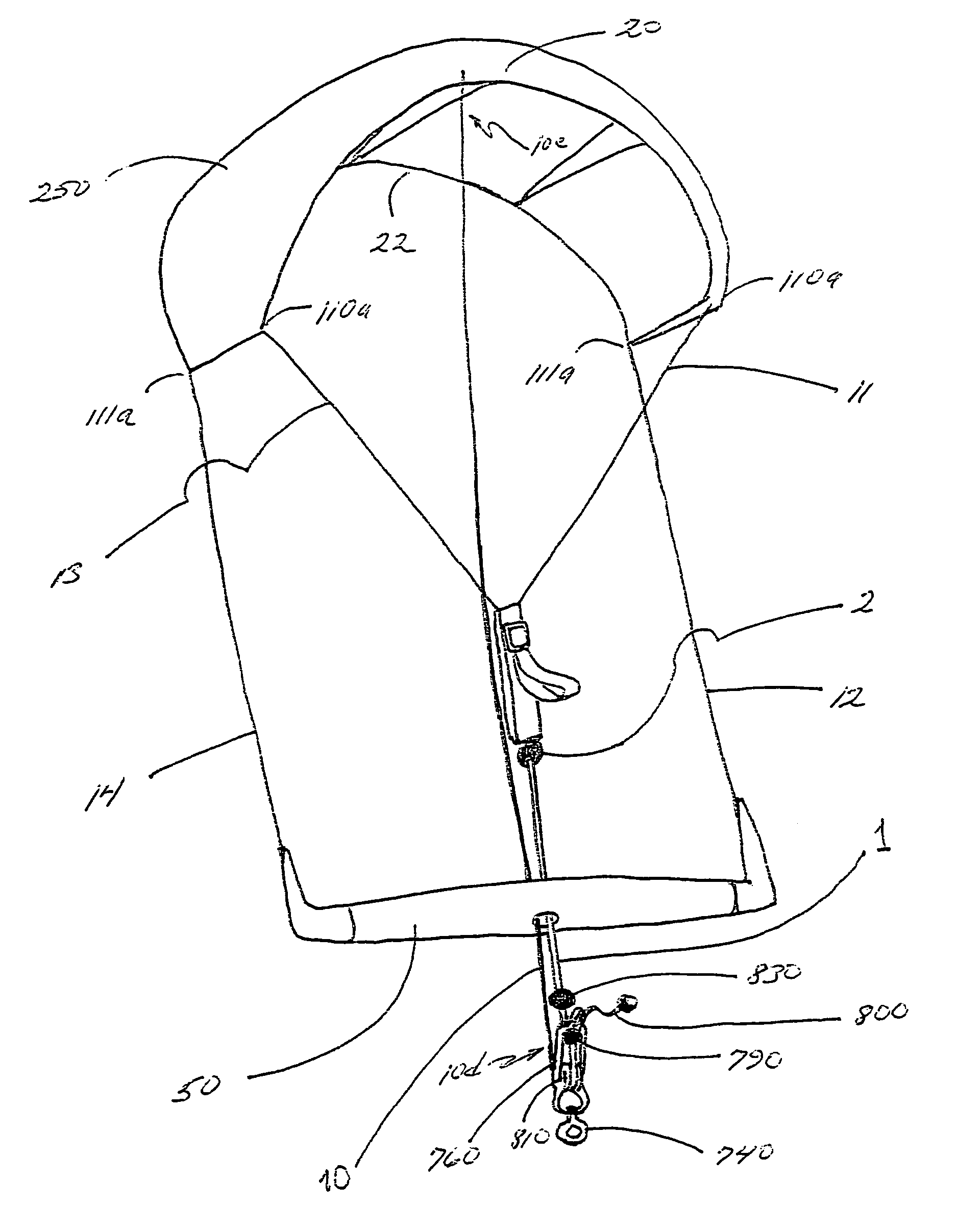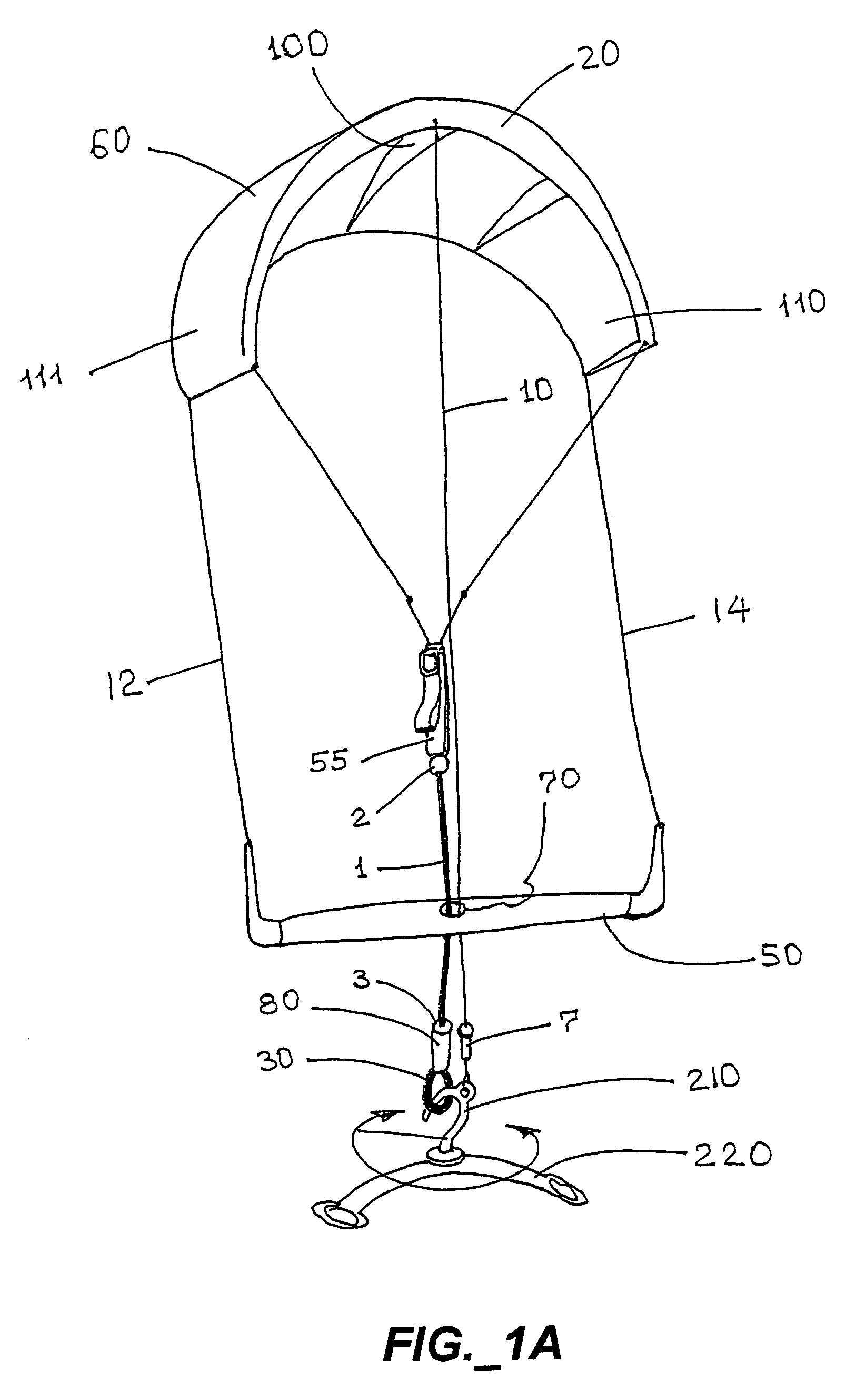Kite safety, control, and rapid depowering apparatus
a kite and rapid depowering technology, applied in the field of kite safety, control and rapid depowering apparatus, can solve the problems of no opportunity to regain kite spin out of control and crash, and quick de-powering of the kite, so as to increase the control of the kite, maintain control, and safe and quick de-powering the kite
- Summary
- Abstract
- Description
- Claims
- Application Information
AI Technical Summary
Benefits of technology
Problems solved by technology
Method used
Image
Examples
Embodiment Construction
[0217]FIGS. 1–16 illustrate a kite safety device 305 for a kite 250 that has an airfoil 60 with leading 20 and trailing 22 edges, with at least two control lines, e.g., first control line 11, second control line 12, third control line 13, and fourth control line 14, attached to distal ends 110, 111 of the airfoil 60 and a control flying bar 50 attached to at least two of the control lines 11, 12, 13, 14. The safety device 305 has a trim line 1. The trim line 1 has an upper end 310 and a lower end 315 and central passageway 320 (FIG. 10) extending from the upper end 310 to the lower end 315 and is sized and shaped to fit slidably through a central opening (trim line guide hole) 70 in the control flying bar 50 of a kite.
[0218]The trim line 1 has a first stopper 2 adjacent the upper end 310 and a second stopper 130 adjacent the lower end. The stoppers 2, 130 are sized and shaped to prevent the upper 310 and lower 315 ends of the trim line 1 from passing through the central opening 70.
[...
PUM
 Login to View More
Login to View More Abstract
Description
Claims
Application Information
 Login to View More
Login to View More - R&D
- Intellectual Property
- Life Sciences
- Materials
- Tech Scout
- Unparalleled Data Quality
- Higher Quality Content
- 60% Fewer Hallucinations
Browse by: Latest US Patents, China's latest patents, Technical Efficacy Thesaurus, Application Domain, Technology Topic, Popular Technical Reports.
© 2025 PatSnap. All rights reserved.Legal|Privacy policy|Modern Slavery Act Transparency Statement|Sitemap|About US| Contact US: help@patsnap.com



